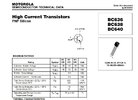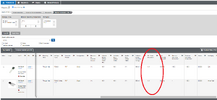Hello,
I put aside the President Washington as it still exhibits the same issues even after replacing the diode. I will try it another time.. For now I got out another radio, a President Grant that has the dual finals and the low-mid-high switch up front. TR35 at some point called it quits, and its a 2SB525C. Just wondering if there is a good alternative transistor to use thats more readily available. Do have some parts Cobra 29 radios if they happen to have something that will do.
Appreciate the help you all have been providing. Thanks.
I put aside the President Washington as it still exhibits the same issues even after replacing the diode. I will try it another time.. For now I got out another radio, a President Grant that has the dual finals and the low-mid-high switch up front. TR35 at some point called it quits, and its a 2SB525C. Just wondering if there is a good alternative transistor to use thats more readily available. Do have some parts Cobra 29 radios if they happen to have something that will do.
Appreciate the help you all have been providing. Thanks.
Last edited:




